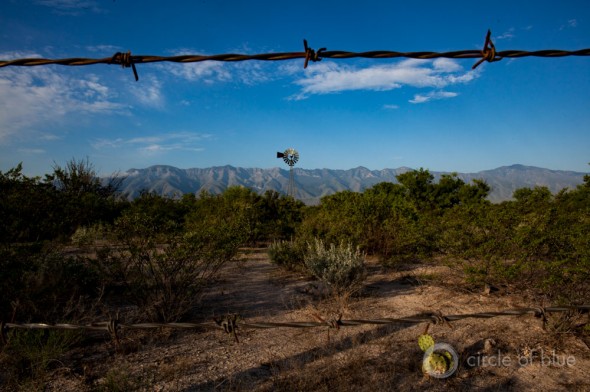A measure of the economic and ecological distress over energy development and water that could await Coahuila is evident in the 350 kilometers (217 miles) of desert between the Rio Grande River and Cuatro Ciénegas, a small city of 12,000 residents that was once the hub of a lush oasis of spring-fed pools and marshes. Most of the trip between the river and the town is swallowed by the Chihuahuan Desert, which encompasses the Burgos and Sabinas basins, the regions targeted for oil and gas development.
A measure of the economic and ecological distress over energy development and water that could await Coahuila is evident in the 350 kilometers (217 miles) of desert between the Rio Grande River and Cuatro Ciénegas, a small city of 12,000 residents that was once the hub of a lush oasis of spring-fed pools and marshes. Most of the trip between the river and the town is swallowed by the Chihuahuan Desert, which encompasses the Burgos and Sabinas basins, the regions targeted for oil and gas development.



Leave a Reply
Want to join the discussion?Feel free to contribute!